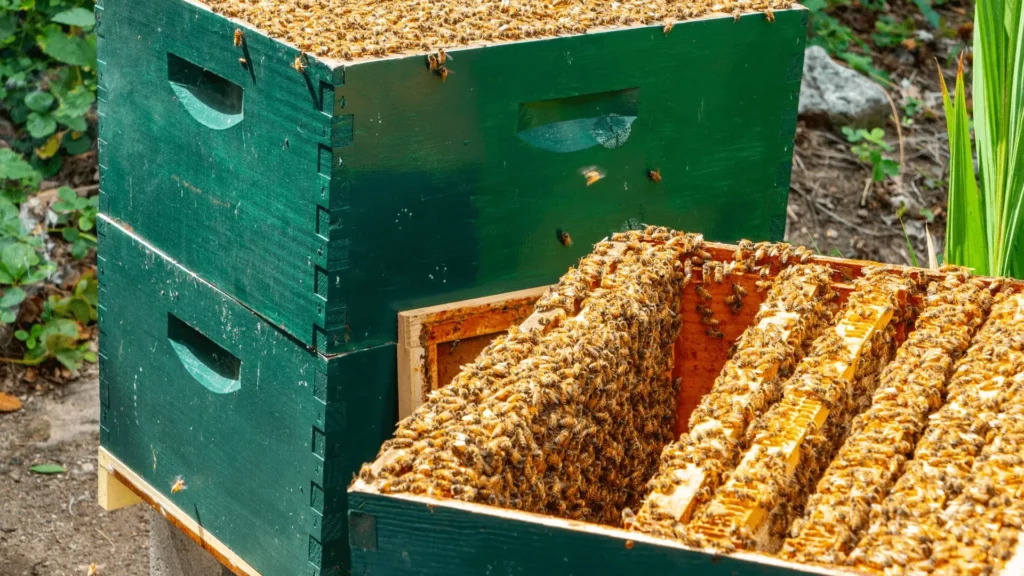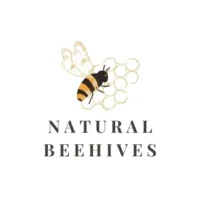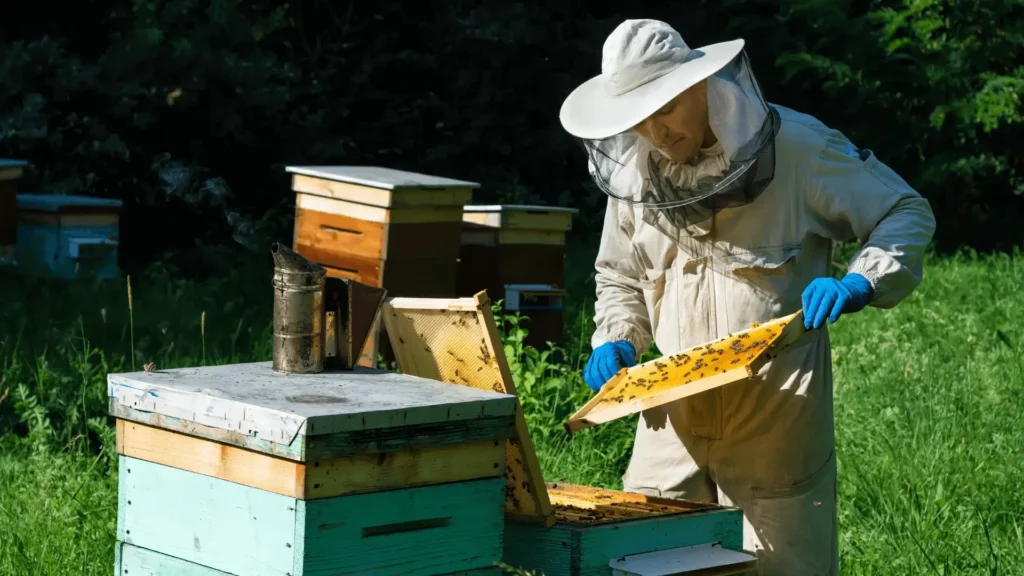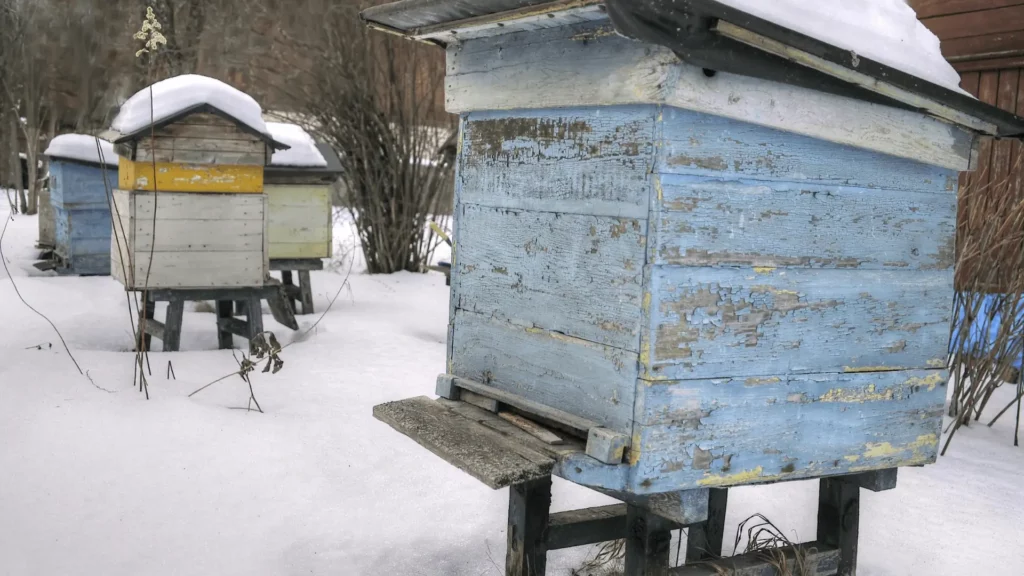
Imagine being able to harvest your own honey and contribute to the well-being of the environment by supporting pollinators. If this sounds enticing, then understanding the Langstroth Hive is a must.
The Langstroth Hive is the gold standard in modern beekeeping. Its ingenious design allows beekeepers to easily manage and maintain their hives while providing a safe and comfortable home for the bees. But what exactly makes the Langstroth Hive so special?
In this comprehensive guide, we will explore the features, benefits, and maintenance of the Langstroth Hive. Whether you’re a beginner beekeeper or a seasoned enthusiast, this guide will equip you with the knowledge and tools to make the most of your Langstroth Hive experience.
From the dimensions and construction to frame assembly and hive management, we’ll cover it all. We’ll also compare the Langstroth Hive to other types of beehives and provide recommendations for purchasing the perfect hive for your needs.
Introduction to the Langstroth Hive
The Langstroth Hive is a revolutionary beehive design that has become the backbone of modern beekeeping practices. Developed in the mid-19th century by Reverend Lorenzo Lorraine Langstroth, this hive design revolutionized honey production and beekeeping management.
The Langstroth Hive consists of several key components, including a hive body, frames, and supers. The hive body serves as the primary structure that houses the bee colony, while the frames provide the structure for the bees to build their honeycombs. The supers are additional boxes that can be added to accommodate more bees or honey storage.
One of the fundamental advantages of the Langstroth Hive is its modularity. The hive’s standardized dimensions allow for easy expansion and manipulation, making it versatile for different colony sizes and management techniques. This standardized design enables beekeepers to efficiently inspect, manage, and harvest honey from the hive without disturbing the bees excessively.
The Langstroth Hive’s adaptability and efficiency have made it a popular choice for both experienced beekeepers and beginners. Whether you’re starting your beekeeping journey or looking to enhance your honey production, understanding the Langstroth Hive is essential for successful beekeeping.
Features of the Langstroth Hive
The Langstroth Hive is renowned for its versatility and functionality, making it a popular choice among beekeepers worldwide. Understanding the various components and features of this hive is crucial for successful beekeeping.
Hive Body
The Langstroth Hive consists of a hive body, also known as a brood box, which serves as the central chamber for the bee colony. This box is typically rectangular in shape and provides ample space for the bees to build their brood comb and store honey. It is available in different sizes to accommodate the needs of the colony and the beekeeper.
Frames
Langstroth Hives utilize frames, which are wooden or plastic structures that support the beeswax foundation. These frames provide structural stability to the hive and allow easy removal of honeycombs for inspection and harvesting. The standard Langstroth frame size is 9 1/8 inches, although variations exist. These frames can be easily replaced, enabling effective hive management.
Supers
Supers are additional boxes that are stacked on top of the hive body. They provide extra space for honey storage and expansion of the bee colony. Langstroth Hives often include shallow supers, medium supers, and deep supers, each with varying depths to accommodate the bees’ needs.
Bee Space
One of the key features of the Langstroth Hive is the concept of bee space. Bee space refers to the precise gap or spacing between hive components. This spacing allows bees to move around comfortably without creating obstructions or becoming agitated. Maintaining the optimal bee space ensures efficient colony management and reduces the risk of comb attachments.
Ventilation and Hive Design
Langstroth Hives are designed to promote proper ventilation within the hive. This is achieved through the use of bottom boards with entrance reducers and top covers with ventilation options. Adequate ventilation helps regulate humidity and temperature inside the hive, creating a favorable environment for the bees.
Remember, understanding the features of the Langstroth Hive is essential for successful hive management. By utilizing the hive body, frames, supers, and ensuring proper ventilation, beekeepers can effectively promote colony growth and maximize honey production.
Setting Up a Langstroth Hive
Setting up a Langstroth Hive for beekeeping is an essential step in starting your beekeeping journey. Follow these step-by-step instructions to assemble and set up your Langstroth Hive:
1. Gather Your Materials: Before you begin, gather all the necessary materials for assembling your Langstroth Hive. This includes the hive components such as the hive body, frames, supers, bottom board, and cover.
2. Assemble the Hive Body: Start by assembling the hive body, which is the main structure that will house your bee colony. Follow the manufacturer’s instructions to securely fasten the sides, ends, and bottom panel of the hive body together.
3. Install the Frames: Once the hive body is assembled, insert the frames into the hive body. Make sure the frames are evenly spaced and parallel to each other. Each frame should have a wax foundation, which provides the base for the bees to build their comb.
4. Add Supers: If you plan on expanding your bee colony and harvesting more honey, you can add supers on top of the hive body. Supers are additional boxes where bees store honey. Assemble the supers and place them on top of the hive body, ensuring they are securely stacked.
5. Position the Bottom Board: Place the bottom board on a solid and level surface. This acts as the base of your Langstroth Hive and provides ventilation for the hive.
6. Cover the Hive: Finally, place the hive cover on top of the supers to protect the hive from the elements. Make sure the cover is secure and provides adequate protection against rain and wind.
By following these simple steps, you can successfully set up your Langstroth Hive and create a suitable living environment for your bee colony. Remember to carefully read the manufacturer’s instructions specific to your Langstroth Hive model for any additional guidance or nuances.
Now that your Langstroth Hive is set up, it’s time to start managing your bee colonies and enjoying the rewards of beekeeping.
Also read: Beginner’s Guide: Estimating the Cost of Starting a Beehive
Managing Bee Colonies in the Langstroth Hive
Managing bee colonies within the Langstroth Hive is a crucial aspect of successful beekeeping. By following best practices, beekeepers can ensure the health and productivity of their colonies. Here are some key considerations for managing bee colonies in the Langstroth Hive:
Hive Inspections
Regular hive inspections are essential for monitoring the overall health of the colony. Inspect the Langstroth Hive every one to two weeks during the active season. Look for signs of disease, pests, and the overall condition of the colony. Check the hive frames for brood patterns, honey stores, and the presence of the queen. This helps in early detection of issues and enables timely interventions.
Pest Control
Effective pest control is necessary to protect the Langstroth Hive and its inhabitants. Monitor for common pests such as Varroa mites, small hive beetles, and wax moths. Use integrated pest management (IPM) techniques to minimize the impact of pests on the colony. This includes employing non-chemical methods like screened bottom boards, drone brood trapping, and regular hive maintenance.
Honey Extraction
When it comes to honey extraction, the Langstroth Hive offers convenience and efficiency. Use a bee brush to gently remove bees from the frames before extracting, ensuring minimal stress to the colony. Utilize a honey extractor to spin the frames and extract honey without damaging the comb. Remember to leave enough honey for the bees to sustain themselves during colder months.
Feeding Practices
Proper feeding practices are crucial during periods of nectar dearth or when establishing a new colony. Supplemental feeding with sugar syrup or pollen patties can help ensure the bees have enough food to thrive. Place feeders inside the hive to minimize robbing by other colonies. Monitor the food supply regularly and adjust feeding as needed.
Swarm Prevention
Swarming is a natural behavior of honeybee colonies, but it can result in the loss of valuable workers and disrupt colony growth. Be proactive in swarm prevention by providing ample space within the Langstroth Hive. Add additional supers when necessary to reduce congestion. Regularly check for queen cells and perform swarm management techniques to control swarming behavior.
By implementing these best practices, beekeepers can successfully manage their bee colonies within the Langstroth Hive. Regular inspections, proactive pest control, and proper honey extraction techniques contribute to healthy and productive colonies. Keep in mind that beekeeping is a continuous learning process, so always stay updated on the latest research and consult experienced beekeepers for guidance.
Also read: Beekeepers Toolbox Essentials: Practical Must-Haves for Successful Beekeeping
Benefits and Drawbacks of the Langstroth Hive
The Langstroth Hive offers numerous benefits to beekeepers, making it one of the most popular hive designs. However, it also has its drawbacks that beekeepers should consider. Let’s explore the advantages and disadvantages of using the Langstroth Hive compared to other types of beehives.
Advantages of the Langstroth Hive
1. Modularity: The Langstroth Hive’s modular design allows for easy expansion and customization. Beekeepers can add or remove frames and supers to accommodate growing bee colonies or harvest honey.
2. Standardization: Langstroth Hives follow standardized dimensions, making it easy to find compatible equipment and share resources within the beekeeping community.
3. Effective Bee Management: The Langstroth Hive’s vertical structure allows for efficient colony management, including inspections, feeding, and pest control. It provides beekeepers with better control and accessibility compared to other hive types.
Drawbacks of the Langstroth Hive
1. Weight: Langstroth Hives can become heavy, especially when filled with honey. Beekeepers may require additional equipment or assistance when handling and inspecting heavier hive bodies.
2. Cost: Setting up a Langstroth Hive can be initially expensive due to the need for multiple hive bodies, frames, and supers. However, the longevity and versatility of the hive often justify the investment.
3. Maintenance: The Langstroth Hive requires regular inspections and maintenance to prevent issues like honeycomb buildup, propolis, and pests. Beekeepers must dedicate time and effort to ensure the hive’s health and productivity.
When considering the Langstroth Hive, it’s important to weigh its benefits against its drawbacks and evaluate how well it aligns with your beekeeping goals and resources. By understanding these factors, you can make an informed decision when choosing the right hive for your beekeeping endeavors.
Also read: Winterizing Bee Hives: How to Prepare Your Hives for the Cold Months
Tips for Successful Langstroth Hive Management
Successfully managing a Langstroth Hive requires careful attention to detail and adherence to best practices. Here are some expert tips and advice to help you ensure the success of your Langstroth Hive:
1. Strategic Hive Placement: Choose a location for your hive that provides ample sunlight, protection from strong winds, and easy accessibility. Ideally, the entrance should face the southeast to maximize exposure to morning sun.
2. Proper Feeding Practices: Ensure your bees have a reliable food source by feeding them during times of nectar scarcity, such as early spring or winter. Use feeders that are suitable for Langstroth Hives, including entrance feeders or top feeders.
3. Regular Hive Inspections: Conduct regular inspections of your Langstroth Hive to monitor the health of your bee colonies. Look for signs of pests or diseases, and take appropriate measures for control and prevention.
4. Swarm Prevention: Implement swarm prevention techniques to maintain a strong and productive hive. This may include providing adequate space for expansion, regular hive maintenance, and timely supering.
5. Queen Management: Keep track of the performance and health of your queen bee. Regularly check for signs of a failing or missing queen, and consider re-queening if necessary.
Remember, successful Langstroth Hive management requires knowledge, experience, and continuous learning. Stay informed about new advancements in beekeeping and adapt your practices accordingly to ensure the thriving of your Langstroth Hive.
Also read: The Ultimate Beekeeping Starter Kit: Everything You Need to Get Started
Buying a Langstroth Hive
When it comes to purchasing a Langstroth Hive, there are a few key considerations to keep in mind. Here are some recommendations to guide you in finding the perfect hive for your beekeeping needs:
1. Trusted Suppliers: It’s essential to source your Langstroth Hive from reputable suppliers who offer quality products. Look for suppliers with positive reviews and a strong reputation in the beekeeping community. This ensures that you receive a hive that is built to last and provides a safe and healthy environment for your bees.
2. Customization Options: Consider whether you require any customization options for your Langstroth Hive. Some suppliers may offer additional features such as specialized frames, hive accessories, or customizable dimensions. Assess your specific requirements and choose a hive that can be tailored to meet your needs.
3. Material and Construction: Pay attention to the materials used in the construction of the hive. Langstroth Hives are commonly made from wood, but there may be variations in quality and durability. Opt for hives that are crafted from sturdy wood, such as cedar or pine, as they offer better longevity and insulation for your bees.
4. Hive Size: Determine the appropriate size of the hive based on your beekeeping goals and the available space. Langstroth Hives come in different configurations, including single-deep, double-deep, and triple-deep options. Consider the size of the bee colony you plan to manage and ensure that the hive has enough capacity to accommodate future growth.
Remember to thoroughly research different suppliers and hive options to make an informed decision. By choosing a Langstroth Hive that suits your requirements and is sourced from a trusted supplier, you’re setting yourself up for success in your beekeeping journey.
Also read: Winter Beehive Insulation: A Guide to the Best Materials
Conclusion
The Langstroth Hive stands as a cornerstone of modern beekeeping practices, offering numerous benefits and opportunities for successful hive management. Through this comprehensive guide, we have explored the key features and components of the Langstroth Hive, providing step-by-step instructions on setting it up and managing bee colonies within it. The Langstroth Hive’s standardized dimensions, versatile frames, and multiple supers make it an efficient and effective choice for beekeepers of all levels of experience. While it does have some drawbacks, its advantages, such as increased honey production and ease of hive inspections, make it a preferred option for many beekeepers. When it comes to purchasing a Langstroth Hive, it is important to consider reliable suppliers and explore customization options that suit individual beekeeping needs. By embracing the Langstroth Hive, beekeepers can maximize their honey production, ensure proper hive management, and contribute to the preservation and well-being of honeybee populations.



